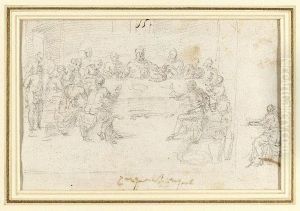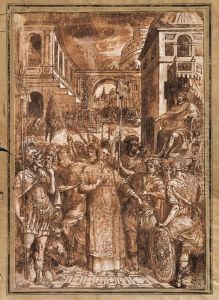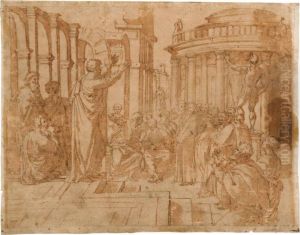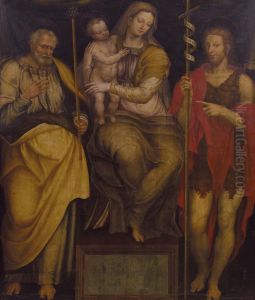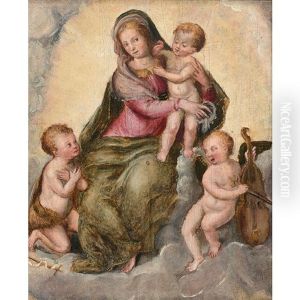Livio Agresti Paintings
Livio Agresti, also known as Livio da Forlì, was an esteemed Italian painter of the Renaissance period, born in 1508 in Forlì, then part of the Papal States. His artistic journey began in his hometown, but it was in Rome where Agresti truly flourished and made a significant impact. He is often associated with the Mannerist style, characterized by its artificial elegance, elongated forms, and sometimes, a deliberate departure from the balanced compositions and harmonious proportions typical of the High Renaissance.
Agresti moved to Rome in the mid-16th century, where he became part of the vibrant and competitive artistic community. There, he was influenced by the works of Raphael and Michelangelo, as well as by his contemporaries. He was involved in several important projects in the city, including work in the Vatican and the decoration of the Oratorio del Gonfalone, one of Rome's most decorated confraternity chapels, showcasing his mastery of fresco.
One of Agresti's most notable contributions was his participation in the decoration of the Palazzo Farnese, one of the grandest and most influential High Renaissance palaces in Rome. He worked under the guidance of Annibale Carracci, a leading figure in the transition to Baroque art, which provided Agresti with exposure to the forefront of artistic innovation of his time. His work is characterized by vivid colors, dynamic compositions, and a skilled rendering of the human form, illustrating both his adherence to and evolution beyond the principles of the High Renaissance.
Throughout his career, Agresti also completed works in other cities, including his native Forlì, where he contributed to the local artistic landscape. Despite his travels, Rome remained the center of his artistic universe, where he absorbed the dynamic changes in art and contributed to the evolution of Italian painting.
Livio Agresti died in 1580, leaving behind a legacy enshrined in the halls of Italian churches and palazzos. His work continues to be studied for its contribution to the transition period between the Renaissance and the Baroque, reflecting the complexity and dynamism of this pivotal moment in art history.
